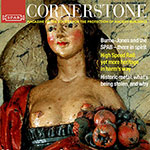Russian Churches

In the late summer of 2008 I was asked to be part of a group of British specialists, well versed in the care and repair of historic buildings on a visit to the Tverskaya region of Russia. My role was to assist in the condition survey of a series of redundant and derelict Russian country churches, one of which will be selected for repair as part of a training programe for local craftsmen and women
We also visited builder’s yards and merchants as well as living, thriving churches. We mainly encountered a number of astonishing abandoned churches. A tumulus shared a lonely late summer landscape with mosquitoes, hares and the stark, dynamited ruins of the church of the Cover of the Virgin at Spastalitski. Cathedral-sized monuments surrounded by derelict farmland sat on the edge of boreal forest, the liturgy perhaps only sung on the yearly feast of the eponymous saint. These places seemed to me to encapsulate many of the challenges facing Russia in 2008.
During our stay it quickly became apparent that the use of lime mortar is relatively unknown in Russia and not used in the repair process. One of the ideas that we came up with was the possibility of hosting a party of Russian church restorers next yearand getting them to work on some of our sites where they will observe the importance that we place on the use in lime in traditional building repair and then the SPAB spring repair course.
[ download complete article as PDF file - 800kb ]
Here is a short video of our trip to the Churches of the wild east. (courtesy of Luke Tchalenko)

